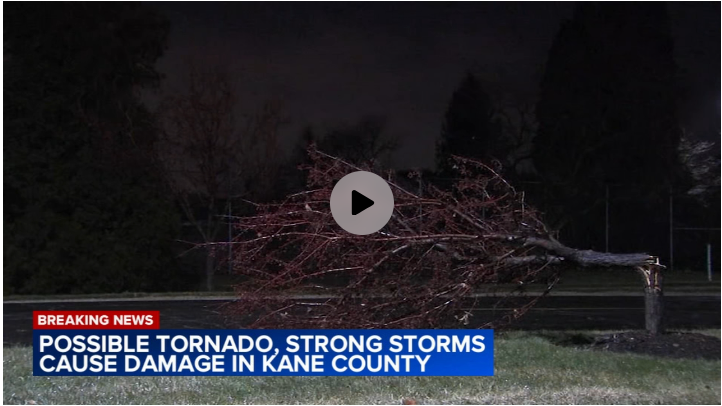Multiple tornado touchdowns reported in western suburbs of Chicago during strong thunderstorms.
Stormy Night: Tornado Touchdowns and Unseasonable Warmth Hit Chicago Suburbs
- Multiple tornado touchdowns reported in Chicago suburbs during severe thunderstorms.
- Significant damage recorded in areas near Sugar Grove, Aurora, and Mundelein.
- Flash flooding reported in various suburbs, adding to weather woes.
- Hail observed in several locations, including Northbrook, Lemont, and Clarendon Hills.
- Rapid temperature drop expected following storms, leading to icy conditions.
- Despite severe weather, unseasonably warm temperatures marked earlier parts of the day.
- Businesses and residents make the most of warm weather with outdoor activities.
- Residents express hope for continued pleasant weather amidst stormy conditions.
Reference: Read full article
WHY CHICAGO FACES TORNADO MULTIPLE TIMES?
Chicago, like many other regions in the United States, experiences tornadoes due to its geographic location and atmospheric conditions. Several factors contribute to the occurrence of tornadoes in the Chicago area:
- Geographic Location: Chicago is located in the Midwest region of the United States, which is part of “Tornado Alley.” Tornado Alley is a region known for its frequent tornado activity due to the clash of warm, moist air from the Gulf of Mexico and cool, dry air from the Rockies and Canada.
- Weather Patterns: Tornadoes often form when specific weather conditions converge, such as strong thunderstorms, unstable atmospheric conditions, and wind shear. The collision of air masses with varying temperatures and humidity levels can create the instability necessary for tornado formation.
- Lake Michigan: The presence of Lake Michigan can influence local weather patterns, including the formation and movement of storms. Sometimes, storms that develop over the lake or move inland from it can produce tornadoes as they interact with the surrounding atmospheric conditions.
- Urban Heat Island Effect: The urban environment of Chicago can contribute to the intensification of thunderstorms and increase the likelihood of tornado formation. The heat absorbed and retained by buildings, pavement, and other urban surfaces can create localized areas of instability within the atmosphere.
- Climate Change: While individual tornado events cannot be directly attributed to climate change, shifts in climate patterns may affect the frequency and intensity of severe weather events, including tornadoes. Changes in temperature, humidity, and atmospheric circulation patterns may influence tornado activity over time.
Overall, Chicago’s susceptibility to tornadoes is primarily due to its location within Tornado Alley, its weather patterns, and the influence of local geographic features like Lake Michigan and the urban environment. However, it’s important to note that while tornadoes do occur in Chicago and its surrounding areas, they are relatively rare compared to regions farther west in Tornado Alley.
